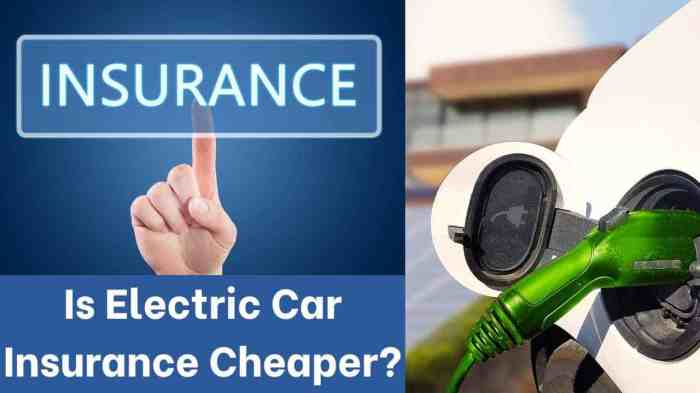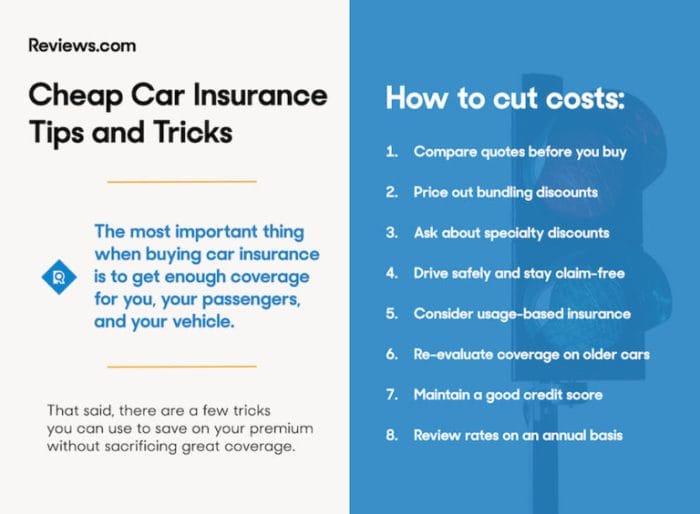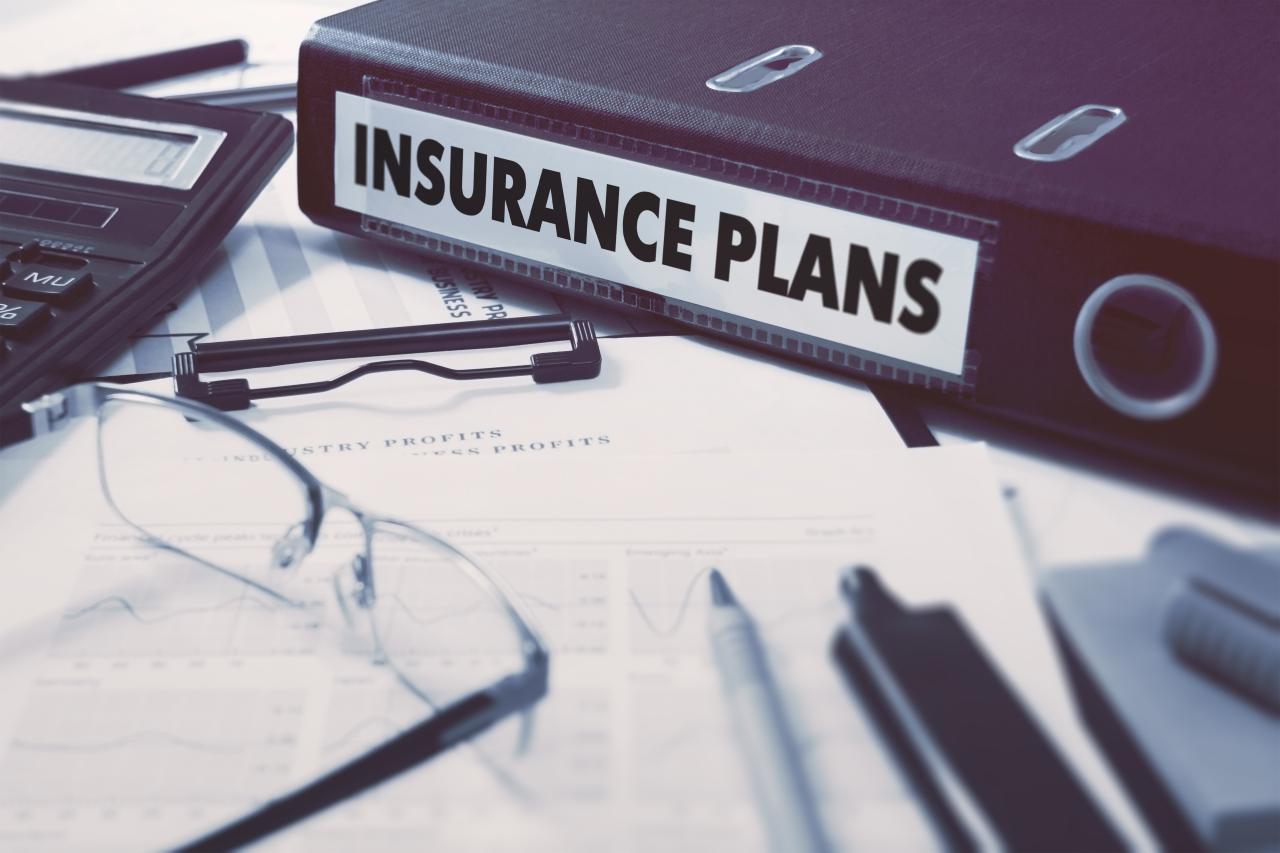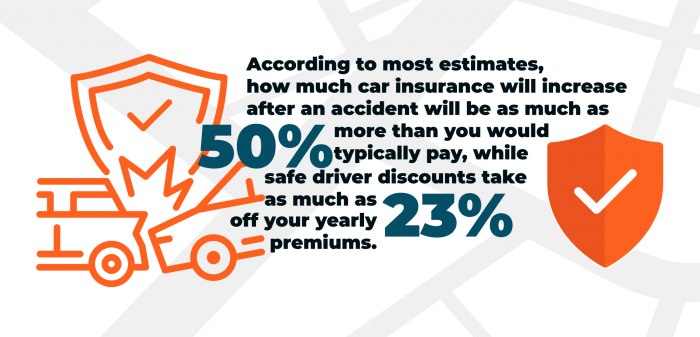In an era where expenses continue to rise, finding ways to save money without compromising essential services is crucial. Car insurance, a necessary expense for vehicle owners, can often put a strain on budgets. However, there are numerous strategies and adjustments you can make to reduce your car insurance premiums without sacrificing coverage.
From exploring usage-based insurance options to implementing safety features, this guide delves into the various methods available to make your car insurance more affordable.
Whether you’re a seasoned driver or a new car owner, these tips and tricks will empower you to make informed decisions and potentially save hundreds of dollars on your car insurance. Dive in and discover the secrets to driving confidently while keeping your insurance costs in check.
Insurance Policy Adjustments

Adjusting your insurance policy can be a cost-effective way to reduce your car insurance premium without compromising coverage. Let’s explore how increasing your deductible, reducing coverage, and balancing cost and protection can help you save money.
Increasing Your Deductible
Raising your deductible is a straightforward way to lower your premium. The deductible is the amount you pay out of pocket before your insurance coverage kicks in. By choosing a higher deductible, you assume more financial responsibility for small claims, resulting in lower monthly payments.
For example, increasing your deductible from $500 to $1,000 could save you around 10-15% on your premium. However, it’s essential to consider your financial situation and ability to pay the higher deductible in case of an accident.
Reducing or Eliminating Coverage
Reviewing your coverage options can reveal areas where you may be paying for unnecessary protection. Consider the following options for potential savings:
- Collision and Comprehensive Coverage: If your car is older or has a low value, you might consider dropping collision and comprehensive coverage. These coverages protect your vehicle against damage from accidents and non-collision events, respectively.
- Rental Reimbursement: If you rarely rent a car, you may not need rental reimbursement coverage, which pays for a rental car while your vehicle is being repaired.
- Towing and Labor: Towing and labor coverage can be eliminated if you have a roadside assistance plan through your auto club or credit card.
Balancing Cost and Protection
While reducing coverage can save you money, it’s crucial to weigh the potential drawbacks carefully. Consider the following factors when making decisions about your coverage:
- Risk Tolerance: Assess your risk tolerance and ability to cover the costs of an accident or repair out of pocket.
- Vehicle Value: Consider the value of your car and whether it’s worth paying for comprehensive and collision coverage.
- Driving Habits: If you have a clean driving record and rarely drive in high-risk areas, you may be able to afford lower coverage limits.
By carefully adjusting your insurance policy, you can achieve a balance between cost and protection that suits your financial situation and driving needs.
Usage-Based Insurance Programs

Usage-based insurance (UBI) programs provide drivers with insurance premiums that are based on how much they drive and how safely they drive. These programs typically use a device installed in the vehicle to track driving behavior, such as mileage, speed, and braking habits.
Pay-Per-Mile Programs
Pay-per-mile (PPM) programs charge drivers a set amount per mile they drive. This type of program is ideal for drivers who do not drive very much or who have a second car that they only use occasionally. Some PPM programs also offer discounts for safe driving habits, such as avoiding speeding tickets and accidents.
Telematics Programs
Telematics programs are more comprehensive than PPM programs and typically track a wider range of driving behaviors. In addition to mileage, telematics programs may also track speed, braking habits, and acceleration. This type of program is ideal for drivers who want to save money on their insurance premiums and who are willing to share their driving data with their insurance company.
Companies Offering Usage-Based Insurance
Several insurance companies offer usage-based insurance programs. Some of the most popular companies include:
- Allstate
- Progressive
- State Farm
- GEICO
- Liberty Mutual
Each company has its own requirements for usage-based insurance programs. Some companies require drivers to install a device in their vehicle, while others allow drivers to use a mobile app to track their driving behavior.
Benefits and Limitations of Usage-Based Insurance
Usage-based insurance programs can offer a number of benefits to drivers, including:
- Lower insurance premiums
- Discounts for safe driving habits
- Feedback on driving behavior
However, there are also some limitations to usage-based insurance programs, including:
- Privacy concerns
- Potential for higher premiums for high-risk drivers
- Limited availability
Overall, usage-based insurance programs can be a good option for drivers who want to save money on their insurance premiums and who are willing to share their driving data with their insurance company.
Safe Driving Discounts

Maintaining a clean driving record is crucial for securing lower insurance rates. Insurance companies reward responsible drivers with safe driving discounts, acknowledging their reduced risk of accidents.
Examples of Safe Driving Discounts
Accident-Free Discount
Drivers with a history of accident-free years are eligible for this discount. The longer the period without accidents, the greater the discount.
Defensive Driving Course Discount
Completing a defensive driving course demonstrates your commitment to safe driving and can lead to a discount.
Usage-Based Insurance Discount
Telematics devices track driving behavior and reward drivers with safe habits, such as smooth acceleration, moderate braking, and obeying speed limits.
Additional Ways to Demonstrate Safe Driving Habits
Avoid Distractions
Minimize distractions while driving, such as using a mobile phone, eating, or adjusting the radio.
Obey Speed Limits
Adhere to posted speed limits and avoid speeding, as it increases the risk of accidents.
Practice Defensive Driving
Be aware of your surroundings, anticipate potential hazards, and leave ample following distance.
Regular Vehicle Maintenance
Ensure your vehicle is well-maintained, as faulty components can contribute to accidents.
Multi-Policy Discounts

Bundling auto insurance with other policies, such as home or renters insurance, can often lead to significant savings on your premiums. This is because insurance companies view you as a more loyal and reliable customer when you have multiple policies with them, and they reward you with lower rates as a result.
Many insurance companies offer multi-policy discounts, and the amount of savings you can receive varies depending on the company and the policies you bundle. For example, Allstate offers a multi-policy discount of up to 25% when you bundle auto and home insurance, while Geico offers a discount of up to 15% when you bundle auto and renters insurance.
Benefits of Bundling Policies
- Potential savings: Bundling policies can save you money on your premiums.
- Convenience: Having all of your insurance policies with one company can make it easier to manage your coverage and pay your bills.
Drawbacks of Bundling Policies
- Higher rates if one policy has a claim: If you have a claim on one of your bundled policies, your rates for all of your policies may increase.
- Less flexibility: Bundling policies can limit your ability to shop around for the best rates on each individual policy.
Loyalty Discounts

Staying loyal to the same insurance company for a long time can lead to lower rates. This is because insurance companies reward customers who remain with them for an extended period by offering loyalty discounts.
The amount of the discount can vary depending on the insurance company and the length of time the customer has been with them. However, some companies offer discounts of up to 10% or more for customers who have been with them for five years or more.
Insurance Companies Offering Loyalty Discounts
- Allstate: Offers a loyalty discount of up to 10% for customers who have been with the company for five years or more.
- Farmers: Offers a loyalty discount of up to 15% for customers who have been with the company for 10 years or more.
- Geico: Offers a loyalty discount of up to 10% for customers who have been with the company for five years or more.
- Progressive: Offers a loyalty discount of up to 15% for customers who have been with the company for 10 years or more.
- State Farm: Offers a loyalty discount of up to 10% for customers who have been with the company for five years or more.
Benefits of Staying with the Same Insurance Company
- Potential Savings: Loyalty discounts can save you money on your car insurance premiums.
- Convenience: It is easier to stay with the same insurance company than to switch companies. You do not have to worry about finding a new insurance company, filling out new applications, or transferring your policy.
- Established Relationship: You have a relationship with your insurance company and know what to expect from them.
Drawbacks of Staying with the Same Insurance Company
- Missing Out on Better Rates: By staying with the same insurance company, you may be missing out on better rates from other companies. Insurance rates can change over time, and other companies may offer lower rates than your current company.
- Lack of Competition: When you stay with the same insurance company, there is less competition for your business. This can lead to higher rates than you would pay if you shopped around for insurance.
Vehicle Safety Features
Incorporating safety features into your vehicle not only enhances your on-road protection but can also lead to reduced insurance premiums. Many insurance companies offer discounts for vehicles equipped with specific safety features, recognizing their potential to minimize the risk of accidents and claims.
Safety Features Rewarded by Insurance Companies
The following safety features are commonly rewarded with insurance discounts:
- Airbags: Front, side, and curtain airbags provide additional protection for occupants in the event of a collision, reducing the severity of injuries.
- Anti-lock Brakes (ABS): ABS prevents wheels from locking during braking, allowing drivers to maintain control and stability, especially on slippery surfaces.
- Anti-theft Devices: Devices such as alarms, immobilizers, and tracking systems deter theft and reduce the likelihood of a vehicle being stolen, which can lower comprehensive coverage premiums.
- Electronic Stability Control (ESC): ESC helps drivers maintain control of their vehicles during emergency maneuvers, reducing the risk of skidding and rollovers.
- Forward Collision Warning Systems: These systems alert drivers to potential collisions, providing time to react and avoid accidents.
- Lane Departure Warning Systems: These systems monitor lane markings and alert drivers when they unintentionally drift out of their lane, helping prevent run-off-road accidents.
Benefits and Drawbacks of Investing in Vehicle Safety Features
Investing in vehicle safety features offers several benefits, including:
- Potential Savings on Insurance Premiums: As mentioned earlier, many insurance companies offer discounts for vehicles with certain safety features, leading to lower insurance costs.
- Increased Safety and Protection: Enhanced safety features provide better protection for occupants in the event of an accident, reducing the risk of injuries and fatalities.
- Improved Vehicle Resale Value: Vehicles with desirable safety features tend to have higher resale values, as buyers recognize their added safety benefits.
However, there are also some drawbacks to consider:
- Initial Cost: Installing additional safety features may involve upfront costs, which can vary depending on the features and the vehicle model.
- Potential Maintenance Costs: Some safety features may require regular maintenance or repairs, adding to the overall cost of vehicle ownership.
- Complexity: Some advanced safety features may require familiarization and training to operate effectively, which can be a consideration for some drivers.
Anti-Theft Devices

Installing anti-theft devices in your car can effectively deter potential thieves and safeguard your vehicle. This proactive measure can also lead to lower insurance rates, as insurance companies recognize the reduced risk associated with protected vehicles.
Common anti-theft devices that insurance companies reward with discounts include:
- Car alarms: These devices sound a loud siren when the car is tampered with, alerting the owner and deterring potential thieves.
- Immobilizers: These systems prevent the engine from starting without the proper key or fob, making it more difficult for thieves to hot-wire the car.
- Tracking systems: These devices use GPS technology to track the location of your car in case it is stolen, aiding law enforcement in recovery efforts.
While installing anti-theft devices can lower your insurance rates, it’s important to consider both the benefits and drawbacks before making a decision.
Benefits of Installing Anti-Theft Devices
- Lower insurance rates: Many insurance companies offer discounts for vehicles equipped with anti-theft devices.
- Theft deterrence: Anti-theft devices can deter potential thieves and reduce the risk of your car being stolen.
- Peace of mind: Knowing that your car is protected can provide peace of mind and reduce anxiety about theft.
Drawbacks of Installing Anti-Theft Devices
- Cost of installation: Installing anti-theft devices can involve upfront costs, which may vary depending on the type of device and the complexity of installation.
- Potential maintenance: Some anti-theft devices may require regular maintenance or battery replacements, adding to ongoing costs.
- False alarms: Some anti-theft devices, particularly car alarms, may trigger false alarms, causing inconvenience and potentially disturbing neighbors.
Ultimately, the decision to install anti-theft devices should be based on a careful assessment of the benefits and drawbacks, as well as your individual circumstances and budget.
Credit Score Impact

Maintaining a good credit score can have a significant impact on your car insurance rates. Insurance companies use credit-based insurance scores, which are based on your credit history, to assess your level of risk as a driver. A higher credit score typically indicates a lower risk of filing a claim, leading to lower insurance rates.
Credit Score Ranges and Insurance Rates
The impact of your credit score on your insurance rates can vary depending on the insurance company and your state’s regulations. However, in general, drivers with higher credit scores tend to pay lower insurance premiums compared to those with lower credit scores.
- Excellent Credit (781-850): Drivers with excellent credit scores may receive the lowest insurance rates, often saving hundreds of dollars per year compared to drivers with lower credit scores.
- Good Credit (670-780): Drivers with good credit scores can also qualify for lower insurance rates, though not as low as those with excellent credit.
- Fair Credit (580-669): Drivers with fair credit scores may pay higher insurance rates than those with good or excellent credit, but they may still be able to find affordable coverage.
- Poor Credit (300-579): Drivers with poor credit scores often face the highest insurance rates. They may be required to pay significantly more for coverage compared to drivers with higher credit scores.
Improving Your Credit Score and Potential Impact on Insurance Rates
If you have a low credit score, there are steps you can take to improve it, which may lead to lower insurance rates in the future:
- Pay Your Bills on Time: Consistently paying your bills on time is one of the most important factors in improving your credit score.
- Reduce Your Debt: Reducing your overall debt can also help improve your credit score.
- Keep Your Credit Utilization Low: Aim to keep your credit utilization, which is the amount of credit you’re using compared to your total credit limit, below 30%.
- Get a Credit Builder Loan: If you have a poor credit history, consider getting a credit builder loan. These loans are designed to help you build credit by making regular payments.
Improving your credit score takes time and effort, but it can be worth it in the long run, as it can lead to lower insurance rates and other financial benefits.
Insurance Comparison Shopping
Shopping around for car insurance quotes is crucial to ensure you’re getting the best rate. Insurance companies evaluate risk differently, leading to varying premiums. Comparing quotes allows you to find a policy that suits your budget and needs.
Online Comparison Tools
Numerous online tools and resources simplify the process of comparing insurance quotes. These platforms enable you to enter your information once and receive quotes from multiple insurers. Some popular options include:
- Insurance.com: This website allows you to compare quotes from over 40 insurance companies.
- The Zebra: This website offers a user-friendly interface and provides quotes from a range of insurers.
- Policygenius: This website offers a comprehensive comparison tool and personalized recommendations.
Insurance Brokers and Agents
Using an insurance broker or agent can simplify the comparison process. These professionals represent multiple insurance companies, enabling them to compare quotes and find the best option for you. However, their services may come with additional fees.
Benefits and Drawbacks
Comparing quotes has several benefits. It allows you to:
- Save money: You may find a policy that is significantly cheaper than your current one.
- Get better coverage: You may find a policy that offers more comprehensive coverage at a comparable price.
- Improve your customer service experience: You may find an insurance company that provides better customer service than your current one.
However, there are also some drawbacks to consider:
- It can be time-consuming: Comparing quotes can take time and effort, especially if you contact multiple insurance companies individually.
- You may not get the best rate: Even if you compare quotes from multiple insurance companies, you may not necessarily get the best rate. This is because some insurance companies offer discounts or promotions that are not available to everyone.
Defensive Driving Courses

Completing defensive driving courses can often lead to lower insurance rates. These courses teach drivers how to recognize and avoid hazardous situations on the road, potentially reducing the likelihood of accidents and subsequent insurance claims.
Reputable Organizations Offering Defensive Driving Courses
Many reputable organizations offer defensive driving courses, both online and in-person. Some examples include:
The National Safety Council (NSC)
The NSC offers a variety of defensive driving courses, including online options and classroom-based programs.
The American Automobile Association (AAA)
AAA provides defensive driving courses tailored to various age groups and driving experience levels.
The Insurance Institute for Highway Safety (IIHS)
The IIHS offers online defensive driving courses designed to improve driver safety and reduce crash risk.
Benefits and Drawbacks of Defensive Driving Courses
Benefits:
Potential Savings on Insurance Rates
Completing a defensive driving course may lead to a discount on your car insurance premium, typically ranging from 5% to 15%.
Improved Driving Skills
Defensive driving courses teach valuable skills that can help drivers navigate challenging road conditions and avoid accidents.
Reduced Risk of Accidents
By learning defensive driving techniques, drivers can become more aware of potential hazards and react appropriately, reducing the likelihood of collisions. Drawbacks:
Time and Effort
Defensive driving courses typically require several hours of instruction, either online or in person.
Course Fees
While some courses may be offered free of charge, others may have associated fees.Overall, defensive driving courses can be a worthwhile investment for drivers looking to improve their driving skills, reduce their risk of accidents, and potentially save money on car insurance premiums.
Last Word
In conclusion, reducing your car insurance costs doesn’t have to be a daunting task. By implementing the strategies Artikeld in this guide, you can potentially save a significant amount of money while maintaining adequate coverage. Remember, the key is to find the right balance between cost savings and protection, ensuring you have the necessary coverage to safeguard yourself and your vehicle.
Regularly reviewing your policy, exploring usage-based insurance options, and implementing safety features are just a few ways to keep your insurance premiums low. By staying informed, driving safely, and making smart choices, you can enjoy the freedom of the open road without breaking the bank.
FAQ
Q: Can I lower my car insurance rates by increasing my deductible?
A: Yes, increasing your deductible, the amount you pay out of pocket before your insurance coverage kicks in, can lead to lower premiums. However, it’s important to choose a deductible that you can comfortably afford to pay in case of an accident.
Q: What are some examples of coverage options that can be reduced or eliminated to save money on car insurance?
A: Collision coverage, which covers damage to your vehicle in an accident, and comprehensive coverage, which covers damage from events like theft or natural disasters, are optional coverages that you may consider reducing or eliminating to save money. However, it’s important to carefully evaluate your needs and ensure you have adequate coverage for your circumstances.
Q: How can I demonstrate safe driving habits to my insurance company?
A: Maintaining a clean driving record, taking defensive driving courses, and installing safety features in your vehicle are all ways to demonstrate safe driving habits to your insurance company. By doing so, you may be eligible for discounts and lower premiums.
Q: What are the benefits and drawbacks of bundling my car insurance with other policies?
A: Bundling your car insurance with other policies, such as home or renters insurance, can often lead to significant savings. However, it’s important to compare quotes from multiple insurance companies to ensure you’re getting the best deal. Additionally, if you have a claim on one policy, it may impact the rates for your other bundled policies.
Q: How does my credit score impact my car insurance rates?
A: In many states, your credit score is a factor that insurance companies consider when determining your rates. A higher credit score is generally associated with lower insurance premiums, as it indicates a lower risk of filing claims.



